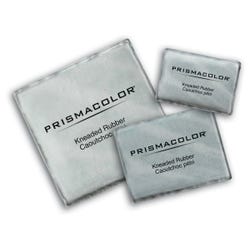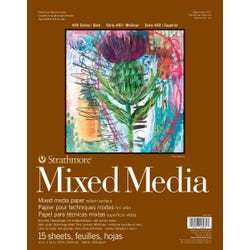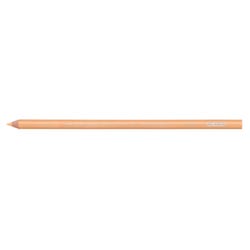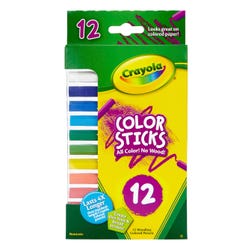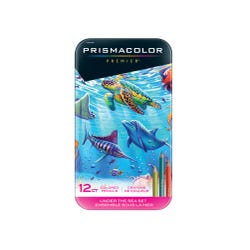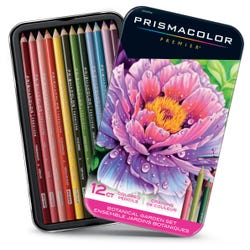Flower & Fish

Description
Lesson Plan and Artwork by Phyllis M. Annett
Students will create a colored pencil drawing of subjects in a juxtaposed situation to show contrast of subject matter and evoke a response from the viewer regarding the meaning of the work.
Objectives
- Students will understand what and how juxtaposed subject matter can evoke reaction from the viewer of an art work.
- Through scientific research of subject matter, students will realize that art, history and science go hand-in-hand in art through the centuries.
- Students will explore colored pencil techniques.
Supplies Needed
Colored Pencils
Pencil Colorless Blenders, Pack of 12
Kneaded Erasers, 1-3/4 x 1-1/4 in, Pack of 12
Mixed Media Pads
*Here are the supplies needed for this lesson plan for reference. Find a convenient carousel of shoppable products for this lesson below.
Standards
Standard #1: Generate and conceptualize artistic ideas and work.
Standard #3: Define and complete artistic work.
Standard #5: Develop and refine artistic work for presentation.
Standard #6: Convey meaning through the presentation of artistic work.
Standard #7: Perceive and analyze artistic work.
Standard #9: Apply criteria to evaluate artistic work.
Standard #11: Relate artistic ideas and works with societal, cultural and historical context to deepen understanding.
Instructions
1
Inform students that they will use a “juxtaposition” choice of subject matter for a colored pencil study using Pencils in underwater and botanical colors. In art, “juxtaposition” is a type of tool that means having contrasting elements side by side in a composition that evokes a strong response from the viewer, ultimately seeking a meaning to the work. A fish and a flower were chosen as the contrasting elements for this colored pencil study.
2
Use Colored Pencil Sets and have students practice the following colored pencil techniques: hatching, cross-hatching, stippling, back and forth strokes, and scumbling. Go over and demonstrate dark to light approaches to color, as well as highlighting, and burnishing with Blenders. Highlights and shadow are achieved by richly pigmented colors such as dark blues and purples for shadow, rather than black and whites, which leave the colors dull. Pale gold and yellows are ideal for warmer shadows. They will get better coverage by using the side of the pencil rather than the point. To feel more confident in their own work, have students practice techniques. Tips for students can include using a kneaded eraser to blot over the work, rather than rubbing it into the fibers of the paper, which would just drive the color further into the work.
3
Students will choose subject matter for their compositions by referring to books and the Internet to see historical paintings and scientific studies of sea creatures and botanical subjects. Remind them that the juxtaposition tool is the theme and aim of their composition. Have students do a preliminary sketch for their work.
4
Instruct the students to start their work on the Mixed Media Paper. Have examples of juxtaposition work from art history such as Op Art and Surrealism.
5
Remind students to use the various colored pencil techniques.
6
On completion of the compositions, have students discuss and evaluate their own work as well as that of others. The question is: Does their work evoke a response from the viewer to seek the meaning of the picture through the use of juxtaposition?



